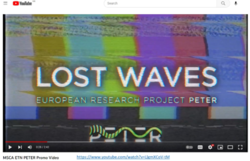CISPR Emissions Limits are no use to System Integrators or Installers
29 Mar 2023
[1] below reminded me that the emissions limits in the CISPR standards, and the IEC/EN standards that use them, assume:
- A single interferer being present, for no longer than 8 hours;
- The interferer being located 10m away for domestic dwellings, 30m away for industrial buildings;
- The interferer only emits a significant level at one narrowband frequency;
- We don’t care about EMI within our own premises – which CISPR calls "self-jamming".
This was quite reasonable when the first EMC emissions limits were created, because there were very few electronic devices in use other than broadcast radio receivers. But has been totally unsuitable for decades! See this video
This means system integrators or installers should expect to have to use EM mitigation to prevent “self-jamming” of the equipment they assemble.
(I’m assuming they cannot space all their 3rd-party electronic units apart by 30m!)
This is true even when the 3rd-party electronic units fully comply with their relevant emissions standards – unfortunately this is not ensured by their CE or UKCA markings – specific QA activities are necessary.
How to deal with all this, and more, cost-effectively in practice, is covered by my training course: “Good EMC Engineering for Equipment, Systems and Installations”, available as a Video webinar here, or as colour-PDF coursenotes at EMC Standards here.
I will be providing Training Workshops at the upcoming EMC and CI 2023 event in Newbury, England in May, see the full programme here!
[1] “An Approach to Introducing Interference Aggregation Effect Into the Emission-Limit-Setting Model for Radio Protection”, Yasushi Matsumoto et al, IEEE Trans. EMC, Vol. 63, No. 3, June 2021, download: https://ieeexplore.ieee.org/document/9210513
Get more from EMC Standards
EMC Standards is a world-leading resource for all things EMC and EMI related. Our website is packed full of both free and paid-for content, including:
- Online quiz
- Webinars
- Training quiz
- And much more!

Electromagnetic Engineering (EMgineering) is the basis for proven good design practices for signal integrity (SI), power integrity (PI), and the control of EMI emissions and immunity (EMC).
Our aim is to help people learn how to more quickly and cost-effectively design and manufacture electronic equipment (products, systems, installations, etc.) to meet functional (i.e. SI/PI) specifications and conform to EMC standards, directives and other requirements.
Such equipment should benefit from reduced warranty costs and financial risks, whilst improving uptime, competitiveness and profitability.
We also cover basic good electrical safety engineering; and the Risk Management of Electromagnetic Disturbances / EMI, whether for Functional Safety or other types of risk.
Join EMC standards TODAY!
